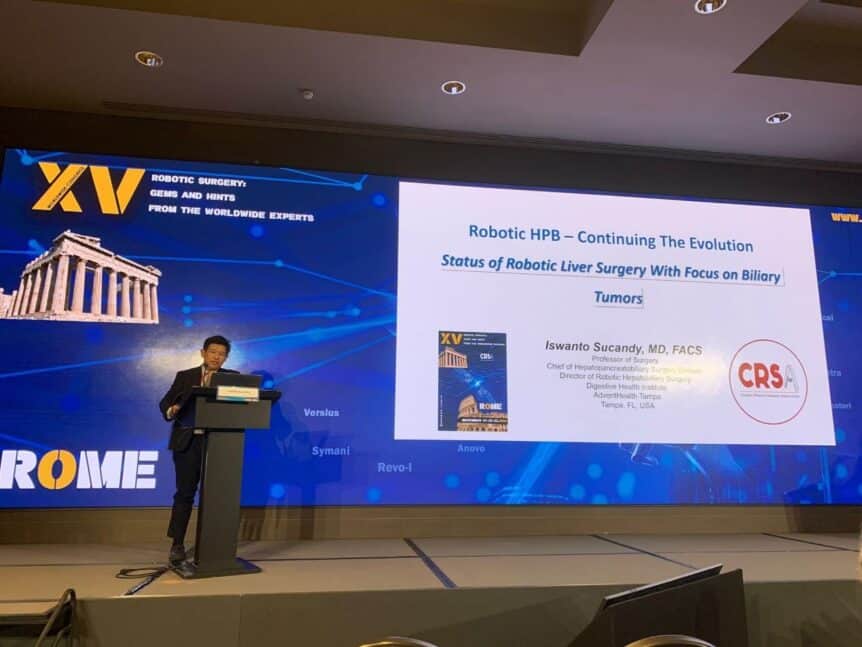
Dr Sucandy Speaking at Clinical Robotic Surgery Association (CRSA) 2024 in Rome
The field of robotic liver surgery is moving toward artificial intelligence and precision surgery. As an expert in robotic liver surgery with more than 10 years experience, Dr Sucandy was invited to speak in Rome about the “Status of Robotic Liver Surgery With Focus on Biliary Cancers” by the organizing committee of the CRSA. The meeting was attended by almost 600 surgeons from around the world who are learning and practicing robotic surgery. This meeting was a clinical potpouri of all leading experts in hepatobiliary and gastrointestinal surgery who are all looking forward to learn and develop the field of robotic surgery further. They have a common goal which is to improve the surgical outcomes of their patients.
Why Robotic Surgery? This question has a clear answer because robotic surgery leads to better outcomes when compared to those of laparoscopic and open surgery. Minimally invasive surgery in liver and many other organs had been proven through multiple randomized clinical trials to be associated with less intraoperative bleeding, lower postoperative complications such as wound infection, abscess, less pain, lower requirement for narcotic pain medication and ultimately less long-term hernia rate from the skin incision. The patient also requires significantly shorter hospitalization and earlier return to work. When compared to laparoscopic techniques, robotic surgery leads to a lower unplanned open conversion rate and higher technical feasibility to undertake complex/difficult operations such as biliary cancer resections. Unplanned open conversion carries negative prognotic implications since it is generally performed emergently under sub-ideal circumstances to “save the day”. Unplanned conversion also leads to a higher admission to the intensive care unit (ICU) and longer hospitalization due to possible additional complications.
Why Biliary Cancer Surgery? Biliary cancer surgery is known to be a technically difficult operation with often invasion to nearby vascular structures called hepatic artery and portal vein. Biliary surgery also often requires a combination with (enbloc) major liver resection due to cancer involvement to the liver. Therefore, technical difficulty in biliary cancer surgery is considered the highest among liver, pancreas, and gastrointestinal operations. Many years of practice and experience are needed to gain knowledge and reproducible outcomes among many other clinical factors. Therefore, in the State of Florida, Dr Sucandy had become the destination of these technically difficult cases, 35% of those being referred by other surgeons. Technical demand of biliary cancer not only related to the ability to resect the cancers but also the experience in resecting and reconstructing the hepatic artery and portal vein when needed. When this operation is undertaken robotically instead of open, special skilsets are really required. Many surgeons are hesitant to undertake vascular reconstruction robotically, this is where Dr Sucandy shared his experience and technical approaches.
In the meeting, not only the sharing of science and techniques is important but also developing network and helping younger surgeons to gain their pathway for future. Dr Sucandy was approached by many young surgeons from Asia and European countries who are deeply interested in coming to United States for robotic surgery training. This transfer of knowledge is important to prepare the future generations of robotic surgeons who can then further improve the field of liver surgery.

